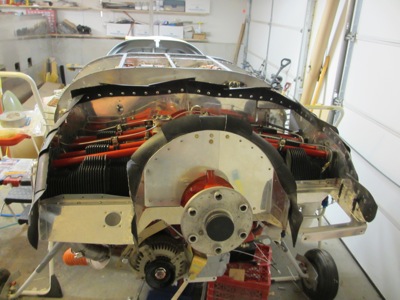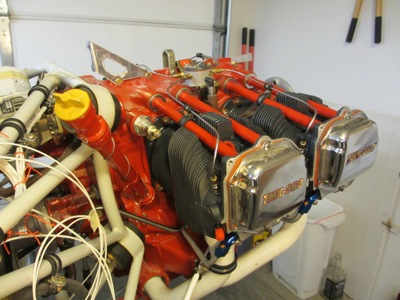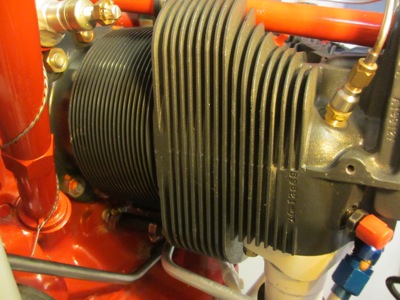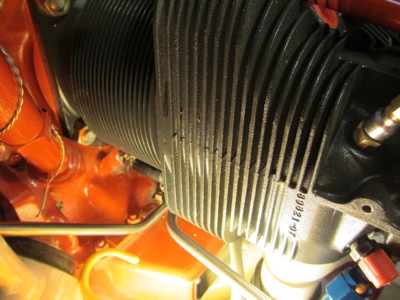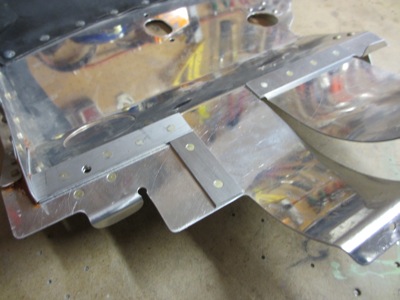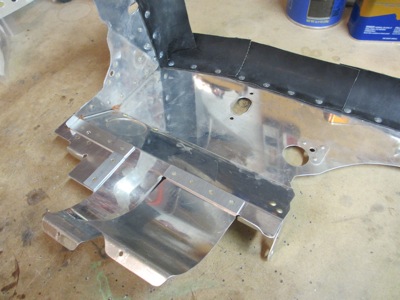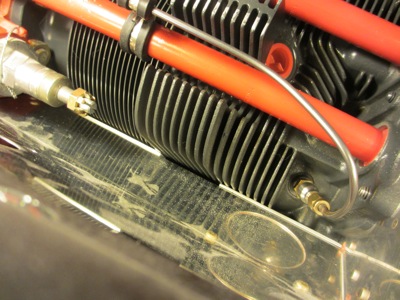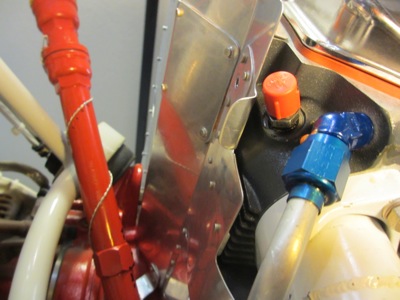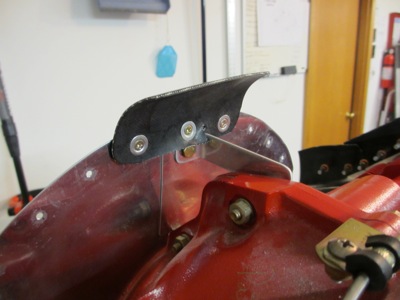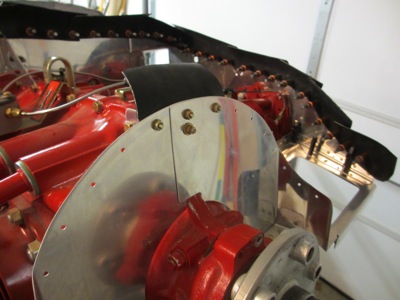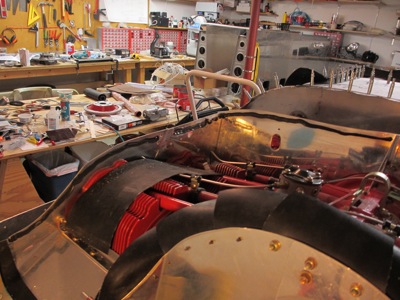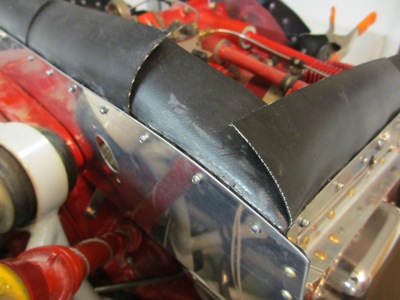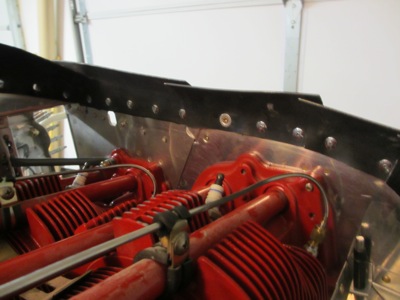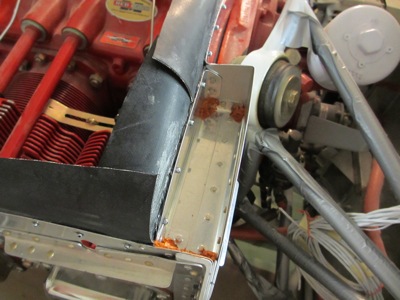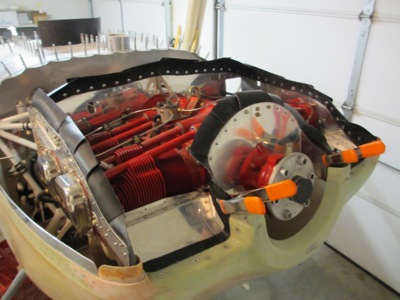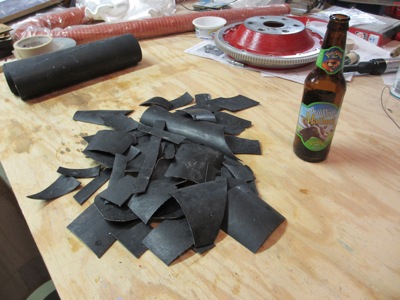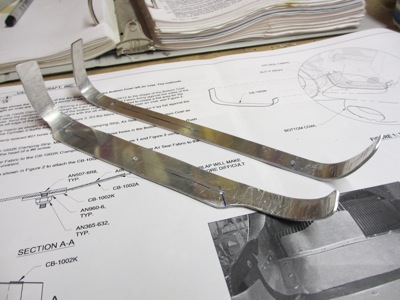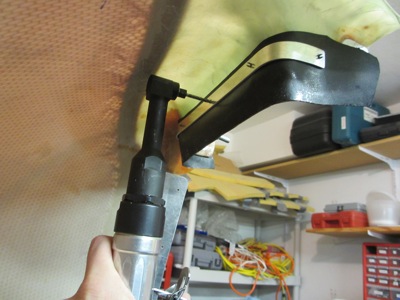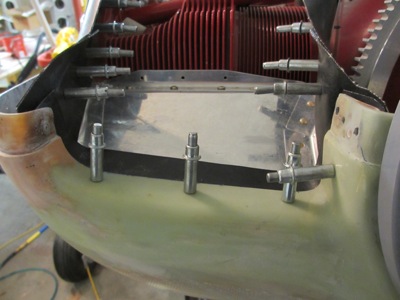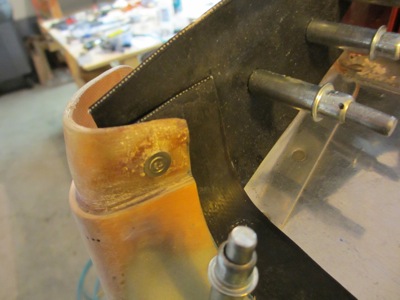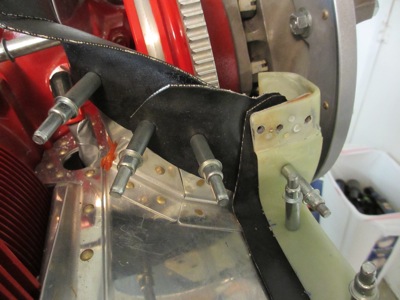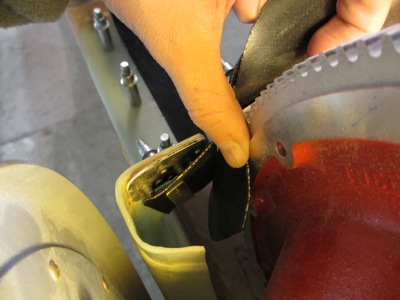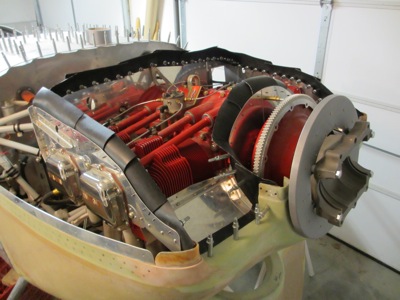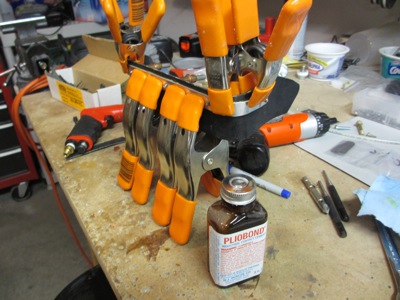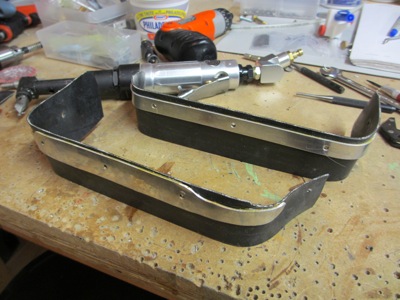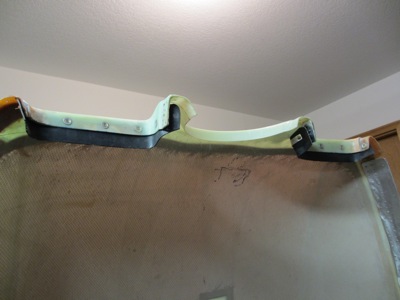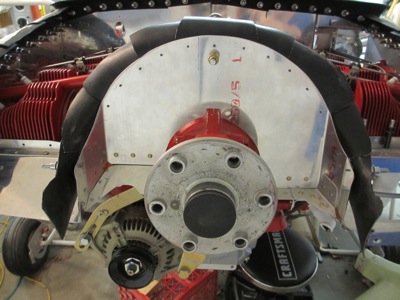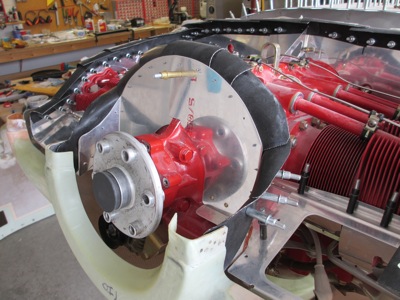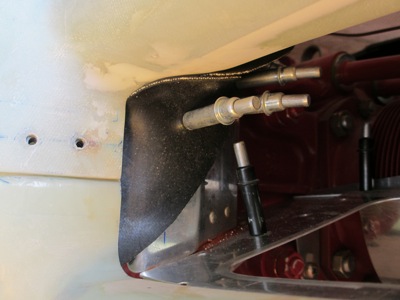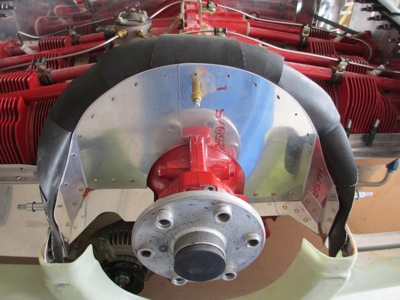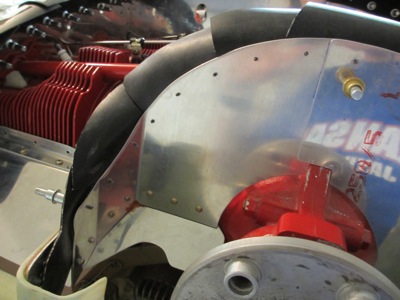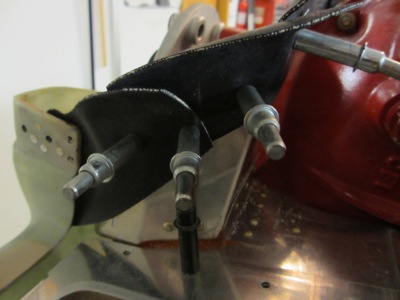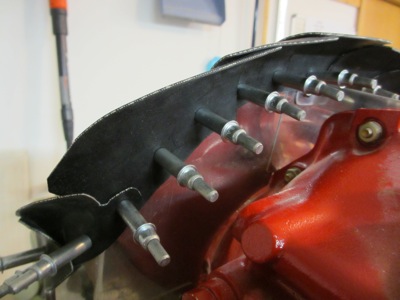One of the chores I'd put off earlier, since I knew I was going to have to remove the baffles to tear down the engine, was the messy job of sealing all the small gaps between the baffles and engine with RTV. Well, now that the engine is all put together again, it's time to bolt on the baffles and get messy.
The #3 cylinder baffle (aft starboard corner) was already installed from a previous job:
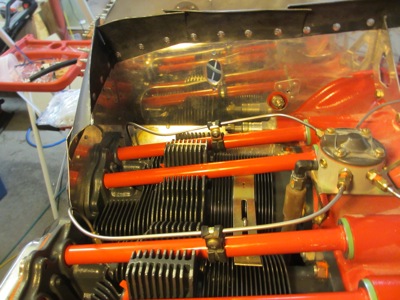
I discovered a rather disconcerting problem with the baffle on the #4 cylinder (aft port corner). It seems that I ended up with a gap between the baffle and cylinder barrel at the junction with the cylinder head, due to a deadly combination of carelessness, cluelessness, and the prepunched holes being drilled in a less than ideal spot. You can see the gap as a bright spot in the left-center of this photo, revealed by a light placed behind the baffle. This clearly won't do, since lots of precious cooling air will end up spilling through that gap instead of going through the cylinder fins and doing useful work.
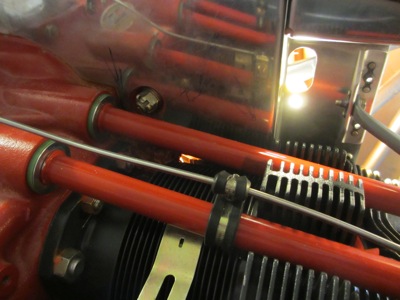
The complete solution to this problem would be to remake the inboard portion of the #4 cylinder baffle, which I still may do someday if it ends up being a problem. But in the meantime, my partial fix was to use some scrap aluminum angle to fabricate a little sealing plate, to cover over the worst part of the gap, and seal up the rest with RTV as best I could. I don't know if this will entirely work, but it was relatively easy to do (or at least as easy as working in the confined spaces on and around the engine ever is). In this photo you're looking forward and to the right; the bolt captures the plate, the spacer holds it in place against the baffle, and the glue does the rest.
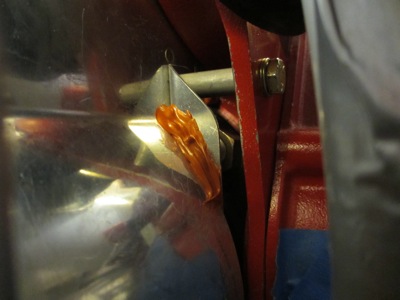
The prop governor line passes up through the front starboard baffle, through this grommet which was a royal pain to install because the stackup of materials is so thick here. Next time I might think about fabricating some kind of seal plate with a smaller grommet in it, which could more easily installed with a couple strategically placed screws.
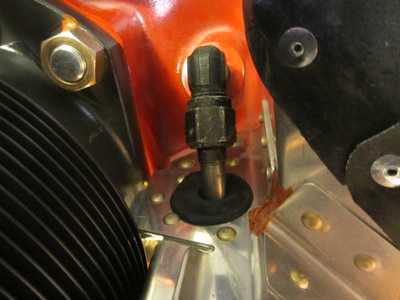
At some point during this process we had an unexpected snowstorm (in May!) that caused Mary to haul all of her garden containers into the garage. I thought this was a funny picture:
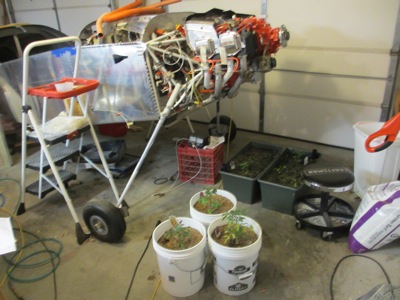
When RTV has to go into a particular location without turning into a total disaster, I prefer to use a syringe to direct the flow. The 6 mL size is just right; I buy them at the farm store up the road.
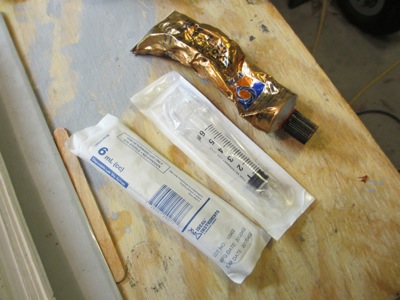
RTV applied between the #1 (front right) cylinder baffle and the engine case:
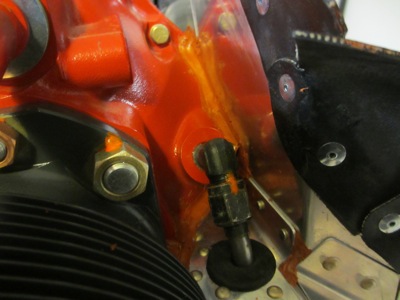
Between the #2 (front left) cylinder baffle and the engine case:
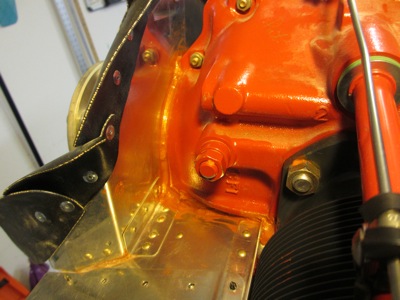
A small spot at the outboard corner of the #2 baffle where it attaches to the cylinder head:
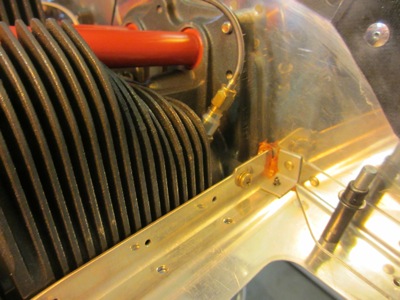
Filling gaps at the inboard corner of the #3 cylinder baffle where it meets the crankcase, below and behind the oil pressure regulator: (reflections make it look messier than it is)
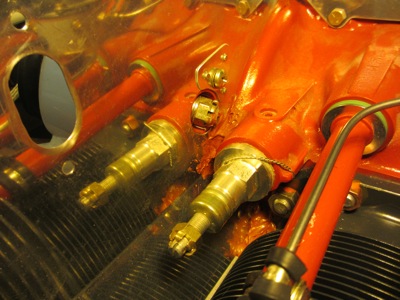
At the outboard corner of the #3 baffle where it mates to the cylinder head: (reflections again)
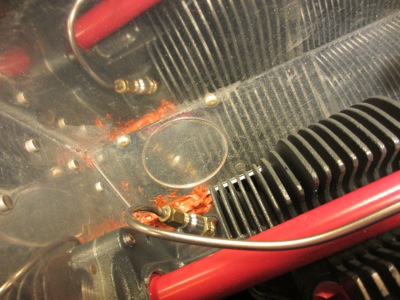
Filling a gap where the shape of the baffle doesn't completely match the junction of the #4 cylinder barrel and the crankcase:
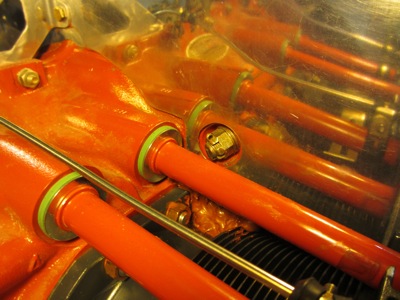
I installed the little splice plates that join the forward and aft baffle halves at the slip joints:
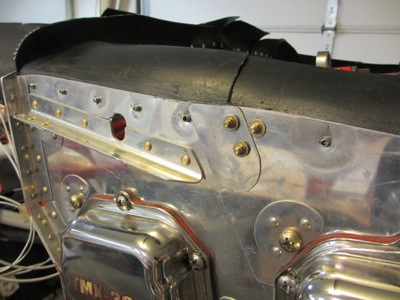
And, installed the baffle tension rods:
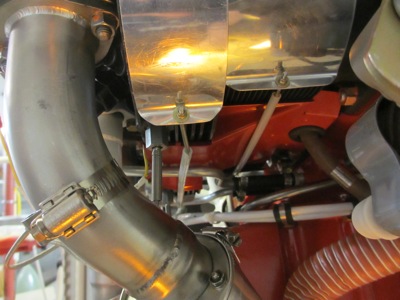
The baffles are now installed on the engine for good! They should not have to come off again unless I discover some kind of unexpected cooling problem, or if I have to tear down the engine again. Please, let's not do that again already, I can't afford to have that much fun.
